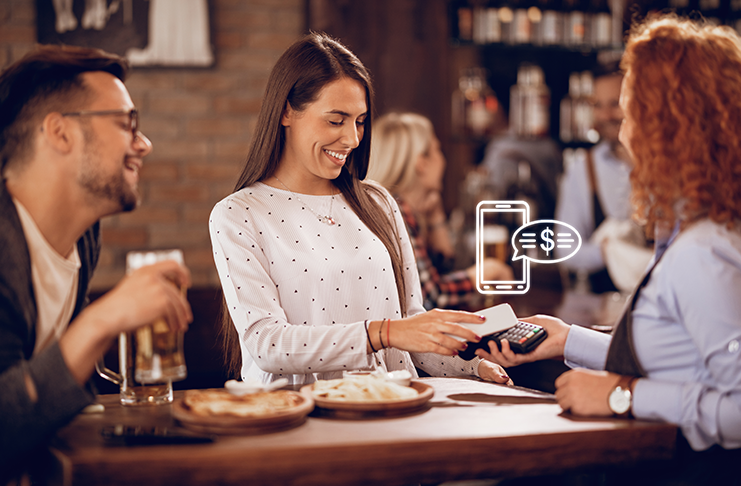Introduction
In the competitive restaurant industry, retaining customers is as critical as attracting new ones. Implementing a well-thought-out loyalty program is one of the most effective strategies to ensure customer loyalty and repeat business. These programs incentivize repeat visits and help create a deeper emotional connection between the restaurant and its patrons. This article will explore the various facets of restaurant loyalty programs and how they can be leveraged to boost customer retention, ultimately driving sustained success for the business.
The Rise of Loyalty Programs in Restaurants
The concept of restaurant loyalty programs has gained significant traction over the past few years. As competition intensifies, restaurants increasingly turn to loyalty programs to differentiate themselves and retain their customer base. These programs offer incentives such as discounts, free meals, and exclusive experiences, encouraging customers to return frequently. The role of loyalty programs in enhancing customer satisfaction and fostering long-term relationships cannot be overstated. Establishing a successful loyalty program involves understanding the customer’s needs and preferences, which forms the foundation for meaningful and enduring interactions.
Crafting Customizable Rewards
A one-size-fits-all approach may not be practical in today’s diverse and discerning customer base. Customizable rewards allow restaurants to tailor their loyalty programs to meet customer preferences. For example, some customers might value exclusive dining experiences, while others prefer monetary savings or unique merchandise. Customizable rewards make customers feel special and appreciated, increasing their likelihood of staying loyal to the restaurant. By offering various reward options, restaurants can cater to different segments of their customer base, ensuring that each individual finds value in the loyalty program. The flexibility to choose rewards that resonate with personal tastes and preferences enhances the overall customer experience and reinforces brand loyalty.
Harnessing Data-Driven Insights
Data is a powerful tool in crafting effective loyalty programs. By analyzing customer data, restaurants can gain insights into purchasing behaviors, preferences, and trends. This information can be used to fine-tune the rewards and offers, ensuring they align with what customers value most. Data-driven insights also help identify high-value customers who can be further incentivized with personalized offers, thereby maximizing the return on investment in the loyalty program. Additionally, data analysis enables restaurants to spot emerging trends and pivot their strategies accordingly, ensuring the program remains relevant and attractive to customers. The ability to harness and apply data effectively can make a significant difference in the success of a loyalty program, driving both customer satisfaction and business growth.
Fostering an Emotional Connection
Building an emotional connection with customers is crucial for the long-term success of a loyalty program. Restaurants can achieve this by creating memorable experiences and showing genuine appreciation for their customers’ patronage. Handwritten thank-you notes, special occasion greetings, and surprise rewards are ways to make customers feel valued. When customers feel an emotional connection with a restaurant, they are more likely to become loyal advocates who return frequently and recommend the restaurant to others. Emotional connections go beyond transactional interactions; they create a sense of belonging and community, which can significantly enhance customer loyalty. A well-executed loyalty program that fosters emotional bonds can transform customers into brand ambassadors, further strengthening the restaurant’s reputation and reach.
Leveraging Technology for Loyalty Programs
Technology plays a pivotal role in the effectiveness of loyalty programs. Mobile apps, for instance, provide a convenient platform for customers to track their rewards, receive personalized offers, and engage with the restaurant. Digital loyalty cards, contactless payments, and automated reward redemption processes enhance the customer experience and ensure seamless program execution. Additionally, technology enables real-time data collection and analysis, allowing for continual refinement and optimization of the loyalty program. Integrating advanced technologies such as artificial intelligence and machine learning can further enhance the personalization and effectiveness of loyalty programs, providing valuable insights and fostering deeper customer engagement. By leveraging technology, restaurants can streamline their loyalty programs and offer customers a more sophisticated and user-friendly experience.
Steps to Implement an Effective Loyalty Program
- Identify Your Goals: Clearly define what you aim to achieve with your loyalty program, whether it’s increased customer visits, higher average spending, or enhanced customer satisfaction. Setting clear, measurable objectives is the first step toward designing a successful program.
- Understand Your Customers: Use surveys, feedback, and purchase data to understand what your customers value the most. Tailor your rewards to these preferences. Deep insights into customer preferences allow for creating more personalized and compelling rewards.
- Choose the Right Platform: Decide whether to use a digital platform, mobile app, or traditional loyalty card. Ensure the platform is user-friendly and integrates well with your existing systems. The choice of platform plays a crucial role in the user experience and overall success of the program.
- Design Attractive Rewards: Create a mix of rewards that appeal to different customer segments. Include immediate rewards as well as long-term incentives to keep customers engaged. A diverse reward offering ensures broader appeal and sustained engagement.
- Promote Your Program: Promote your loyalty program using in-store signage, social media, email marketing, and staff recommendations. Make sure customers know about the benefits and how to join. Effective promotion drives enrollment and active participation in the loyalty program.
- Monitor and Adjust: Regularly review the program’s performance through customer feedback and data analysis. Be prepared to make adjustments to improve effectiveness and customer satisfaction. Continuous monitoring and adjustments ensure the program remains dynamic and aligned with customer expectations.
Conclusion
Restaurant loyalty programs are powerful for boosting customer retention and fostering long-term loyalty. By offering customizable rewards, leveraging data-driven insights, fostering emotional connections, and utilizing technology, restaurants can create highly effective loyalty programs that resonate with their customers. Implementing a well-designed loyalty program enhances customer satisfaction and drives repeat business, ensuring sustained success in the competitive restaurant industry. As the market evolves, focusing on understanding and meeting customer needs through innovative loyalty strategies will be essential for continued growth and customer loyalty.
Keep an eye for more latest news & updates on Mystories List!
